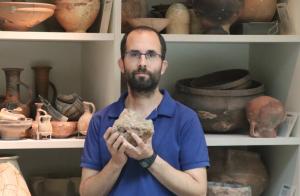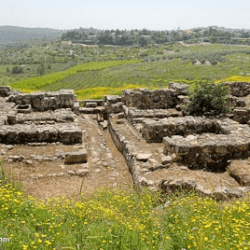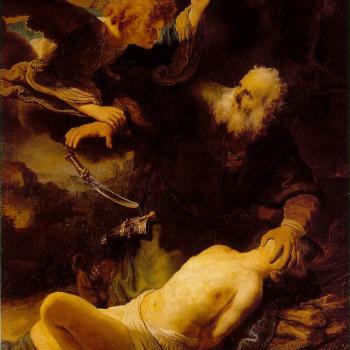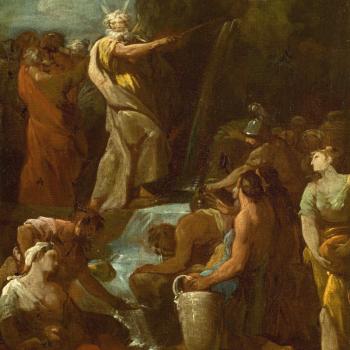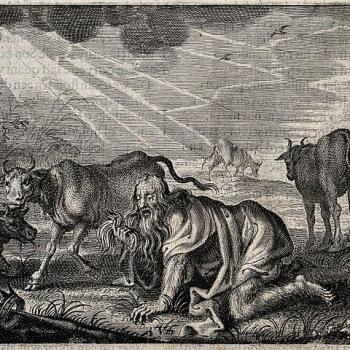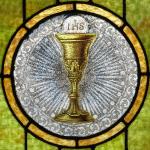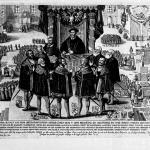+ Scientific Corroboration of the Biblical Data Regarding Kiln-Baked Bricks
“Please Hit ‘Subscribe’”! If you have received benefit from this or any of my other 4,500+ articles, please follow this blog by signing up (w your email address) on the sidebar to the right, above where there is an icon bar, “Sign Me Up!”: to receive notice when I post a new blog article. This is the equivalent of subscribing to a YouTube channel. Please also consider following me on Twitter / X and purchasing one or more of my 55 books. All of this helps me get more exposure, and (however little!) more income for my full-time apologetics work. Thanks so much and happy reading!
***
2 Kings 12:17 (RSV) At that time Haz’ael king of Syria went up and fought against Gath, and took it. . . . (cf. 1 Kgs 19:15; 2 Kgs 8:8; Amos 1:4)
Encyclopaedia Britannica (“Hazael”) states:
Hazael (flourished 9th century BC) was a king of Damascus, whose history is given at length in the Bible, II Kings 8–13. . . . He was eventually conquered by Shalmaneser III (859–824 BC), king of Assyria, . . .
Hazael’s reigned c. 842 – c. 800 BC. Shalmaneser III of Assyria records that he defeated Hazael in battle and captured many chariots and horses from him, which is archaeologically verified by his “Black Obelisk”: dated 827-824 BC. Most scholars think that Hazael was the author of the Tel Dan Stele, which is the most significant archaeological evidence of the existence of King David. See: Hagelia, Hallvard (January 2004). “The First Dissertation of the Tel Dan Inscription”. Scandinavian Journal of the Old Testament. Volume 18, Issue 1, p. 136.
Recent excavations and dating techniques at Tell es-Safi/Gath: ancient Gath, the Philistine city where Goliath came from, verify these events and dates. The article recounting the findings is, “Applying thermal demagnetization to archaeological materials: A tool for detecting burnt clay and estimating its firing temperature” (Yoav Vaknin et al, Plos One, 9 October 2023). It stated in its Abstract:
We implemented the thermal demagnetization method on burnt materials from an Iron Age structure at Tell es-Safi/Gath (central Israel), which led to a revision of the previously published understanding of this archaeological context. We demonstrated that the conflagration occurred within the structure, and not only in its vicinity as previously suggested. We also showed that a previously published hypothesis that bricks were fired in a kiln prior to construction is very unlikely. Finally, we conclude that the destruction of the structure occurred in a single event and not in stages over several decades.
More specifically, the authors concluded:
Tell es-Safi is one of the largest archaeological mounds in central Israel. It is located ca. 40km west-south-west of Jerusalem and identified with biblical Philistine Gath. Excavations at the site have revealed a well-defined destruction layer with extensive evidence of a site-wide destruction, with massive burning, in a well-defined chronological horizon [41]. This destruction is dated to ca. 830 BCE (based on radiocarbon and pottery seriation) and is linked to the siege and destruction of Philistine Gath by Hazael, King of Aram Damascus, as mentioned in II Kings 12:18.
This is consistent with the known time of Hazael’s reign, and is, therefore, yet another of the innumerable verifications of the Old Testament’s profound historical accuracy and trustworthiness. It corroborated an earlier article, “The 9th century BCE destruction layer at Tell es-Safi/Gath, Israel: integrating macro- and microarchaeology” (Dvory Namdar et al, Journal of Archaeological Science, Volume 38, Issue 12, December 2011, Pages 3471-3482), which had concluded:
Here we examine the case of a seemingly short-term violent event: the destruction of Tell es-Safi/Gath, Israel (Fig. 1a), dated to the mid/late 9th century BCE, most probably as a result of an Aramaean military campaign by Hazael king of Aram Damascus (Maeir, 2004, Maeir, 2008, Maeir, 2009).
The Jerusalem Post noted the significance of this study:
Using a “breakthrough” technology based on measuring the magnetic field recorded in burnt bricks, researchers at four Israeli universities have corroborated the occurrence of an event described in the Bible’s Second Book of Kings – the conquest of the Philistine city of Gath by Hazael, King of Aram. . . .
“Throughout the Bronze and Iron Ages, the main building material in most parts of the Land of Israel was mud bricks. This cheap and readily available material was used to build walls in most buildings, sometimes on top of stone foundations,” Lipschits explained. . . .
[Vaknin stated] “Most researchers, however, believe that this technology did not reach the Land of Israel until much later with the Roman conquest; until that time the inhabitants used sun-dried mud bricks. Thus, when bricks are found in an archaeological excavation, several questions must be asked: First, have the bricks been fired, and if so, were they fired in a kiln before to construction or on site, in a destructive conflagration event? Our method can provide conclusive answers.” (Judy Siegel-Itzkovich, “Israeli research uses Earth’s magnetic field to verify event in Bible’s Book of Kings,” 1-4-24)
In the final Conclusions section, Vaknin et al wrote:
The common understanding that in the Southern Levant, sun-dried mud bricks and not pre-fired bricks were used for construction prior to the Roman period is most probably correct.
This is biblically interesting insofar as the Bible mentions the use of kiln-baked bricks in Mesopotamia, in conjunction with the Tower of Babel story:
Genesis 11:3 And they said to one another, “Come, let us make bricks, and burn them thoroughly.” And they had brick for stone, and bitumen for mortar.
That was around 2900 BC, give or take a hundred years, by my best estimates. I wrote about the use of baked bricks in my article, The Tower of Babel, Archaeology, & Linguistics [4-13-23]. I had noted:
Kiln-fired Mesopotamian bricks were different from the bricks used in Palestine, which only utilized sun-dried mud bricks.
Footnote: See Kathleen Kenyon, Archaeology in the Holy Land (New York: Norton, 4th ed., 1979) 46, 87, 91, 164, etc.
*
Practical Matters: Perhaps some of my 4,600+ free online articles (the most comprehensive “one-stop” Catholic apologetics site) or fifty-five books have helped you (by God’s grace) to decide to become Catholic or to return to the Church, or better understand some doctrines and why we believe them.
Or you may believe my work is worthy to support for the purpose of apologetics and evangelism in general. If so, please seriously consider a much-needed financial contribution. I’m always in need of more funds: especially monthly support. “The laborer is worthy of his wages” (1 Tim 5:18, NKJV). 1 December 2021 was my 20th anniversary as a full-time Catholic apologist, and February 2022 marked the 25th anniversary of my blog.
PayPal donations are the easiest: just send to my email address: apologistdave@gmail.com. Here’s also a second page to get to PayPal. You’ll see the term “Catholic Used Book Service”, which is my old side-business. To learn about the different methods of contributing (including Zelle), see my page: About Catholic Apologist Dave Armstrong / Donation Information. Thanks a million from the bottom of my heart!
*
***
Photo credit: Dr. Yoav Vaknin (credit: TEL AVIV UNIVERSITY) / The Jerusalem Post (1-4-24)
Summary: A recent archaeological study verified the biblical accuracy of both the date of the sacking of Gath (Goliath’s hometown) and the non-use of kiln-fired bricks in Israel.


